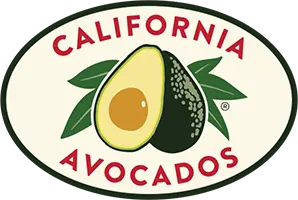
12 California Avocado Facts and Fun Tidbits
- California Avocados are grown by about 3,000 California Avocado farmers on approximately 50,000 acres
- California Avocado groves are located from San Diego County to Monterey County
- The majority of avocados consumed in the U.S. are imported. California is the largest producer of avocados grown in the U.S.
- The California difference: rich soil, fresh coastal breezes, California sun and the care of dedicated local farmers
- Avocados need the warm sun during the day with cool breezes at night, which is one reason select regions of California are perfect for growing avocados
- The Hass avocado variety is a California native. It was first discovered by Rudolph Hass in the mid-1920’s. Every Hass avocado in the world can trace its roots to that “Mother Hass Tree” in La Habra Heights, California
- The name of the avocado variety is typically derived from the name of the person who discovered it, such as the Hass (rhymes with ‘pass’), named after Rudolf Hass
- There are eight avocado varieties grown commercially in California, but the Hass variety is the most popular, accounting for approximately 95 percent of the total crop volume
- Lamb Hass and GEM are the next two most popular California Avocado varieties
- It takes about 14-18 months to grow a single California Avocado
- One California Avocado tree can produce about 150 avocados (or 60 pounds of fruit) per season
- The California Avocado season is typically from spring through summer. Tips for Finding California Avocados
MORE AVOCADO FACTS
- Although commonly thought of, and classified by some as a vegetable, avocados are a fruit because they meet the botanical criteria for a berry: fleshy pulp and large seed
- Avocados were once a luxury food reserved for the tables of royalty, but now avocados are enjoyed around the world by people from all walks of life.
- The avocado is also called an Alligator Pear because of its pear-like shape and green skin.
- Avocado is a derivative of the Spanish word aguacate, which in turn comes from the Aztec word ahuacatl.
- Approximately 1 in 10,000 avocado buds will set and mature into a fruit.
- The size of an avocado does not indicate the fruit quality or stage of ripeness. An avocado’s seed actually grows with the fruit, so the seed-to-fruit ratio will always be close to the same.
- Avocados are great to eat 24/7 – check out these Avocado Recipe Ideas.


Comments